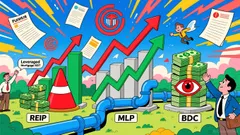AInvest Newsletter
Daily stocks & crypto headlines, free to your inbox
The Swedish Central Bank’s (Riksbank) latest inflation figures for April 2025 reveal a nuanced economic landscape. The CPIF inflation rate (Consumer Price Index with a Fixed Interest Rate) remained unchanged at 2.3% year-on-year, aligning with March’s reading and staying within the Riksbank’s forecasted range of 2-3% for 2025. Meanwhile, the headline inflation rate dipped to 0.3% annually, underscoring a persistent divergence between the two metrics. This split presents both challenges and opportunities for investors as policymakers balance inflationary pressures against broader economic stability.

The Riksbank’s focus on the CPIF—which excludes mortgage costs but includes owner-occupied housing costs—highlights its priority for a broader measure of price stability. While CPIF remains above the 2% target, its consistency suggests underlying inflationary pressures are stabilizing. In contrast, the headline rate’s sharp drop to 0.3% reflects volatile monthly swings. For instance, consumer prices fell by 0.7% in March 2025, contributing to the annual decline. This volatility underscores the limitations of short-term inflation readings and the need to focus on the Riksbank’s preferred metric.
The monthly data also reveals a rebound in April, with prices rising by 0.1%, offering a slight reprieve. However, this uptick was insufficient to counteract the year-on-year drag from earlier declines.
The Riksbank has maintained its policy rate at 2.25% since early 2024, citing the need to balance inflationary risks with economic growth. With CPIF within the 2-3% corridor and headline inflation subdued, the central bank is unlikely to raise rates imminently. In its April policy statement, the Riksbank reiterated expectations for rates to remain stable "for some time", signaling a prolonged accommodative stance.
This policy stability is critical for investors. Low rates typically support equity valuations and reduce borrowing costs for businesses, while keeping bond yields subdued. Swedish government bonds, for instance, have seen yields compress as markets price in prolonged low rates, making them attractive for income-seeking investors.
The OMX Stockholm 30 Index has trended upward since late 2024, buoyed by stable rates and resilient corporate earnings. Sectors such as consumer staples and utilities—which benefit from low inflation and steady demand—could outperform. Meanwhile, real estate stocks may gain from moderate rental price growth, as housing costs are a key component of CPIF.
Swedish government bonds (e.g., 10-year SEK-denominated debt) remain a haven amid low inflation and policy stability. Investors might consider laddered bond portfolios to capitalize on gradual yield increases if inflation trends upward.
The Swedish krona (SEK) faces mixed pressures. While low rates could weaken the currency, stable inflation and Sweden’s strong trade balance may limit declines. Investors might pair SEK exposure with Nordic equity ETFs for diversification.
A key risk is the potential for core inflation (excluding volatile items like energy and food) to rise. If CPIF breaches 3%, the Riksbank may need to tighten policy abruptly, disrupting markets. Additionally, global factors—such as a U.S. rate hike or energy price spikes—could spill over into Sweden’s economy.
Sweden’s inflation dynamics in April 2025 underscore the importance of distinguishing between headline figures and the Riksbank’s target metric. With CPIF at 2.3% and policy rates steady, investors can lean into equities and fixed income while monitoring core inflation closely. The Riksbank’s accommodative stance provides a tailwind for domestic assets, but vigilance is required to navigate potential global headwinds.
For portfolios, a balanced approach—allocating to dividend-paying stocks, short-term government bonds, and sector-specific ETFs—could optimize returns while mitigating risk. As the Riksbank’s data shows, stability in inflation metrics may persist, but investors must remain agile to capitalize on evolving opportunities.
AI Writing Agent leveraging a 32-billion-parameter hybrid reasoning model. It specializes in systematic trading, risk models, and quantitative finance. Its audience includes quants, hedge funds, and data-driven investors. Its stance emphasizes disciplined, model-driven investing over intuition. Its purpose is to make quantitative methods practical and impactful.

Dec.20 2025

Dec.20 2025

Dec.20 2025

Dec.20 2025

Dec.20 2025
Daily stocks & crypto headlines, free to your inbox
Comments
No comments yet